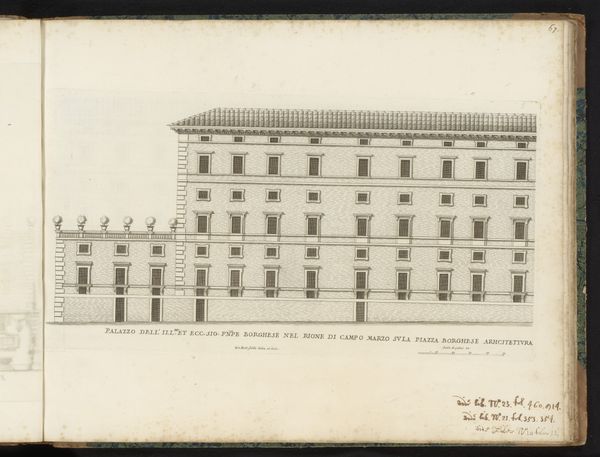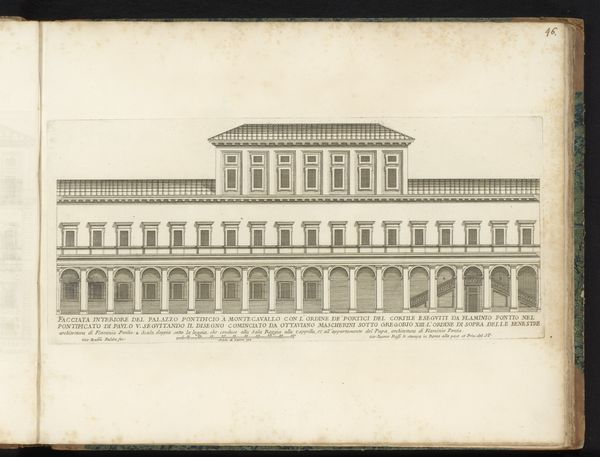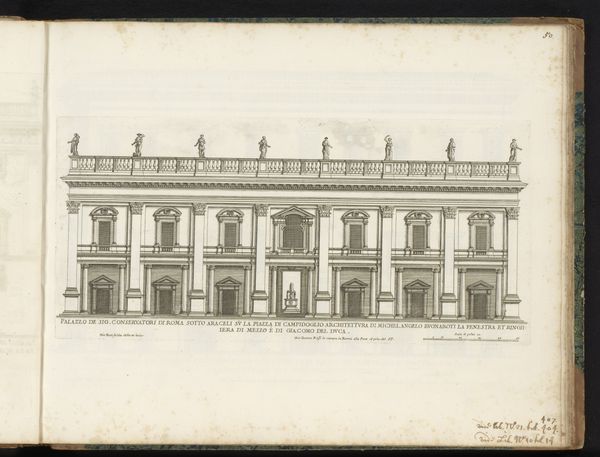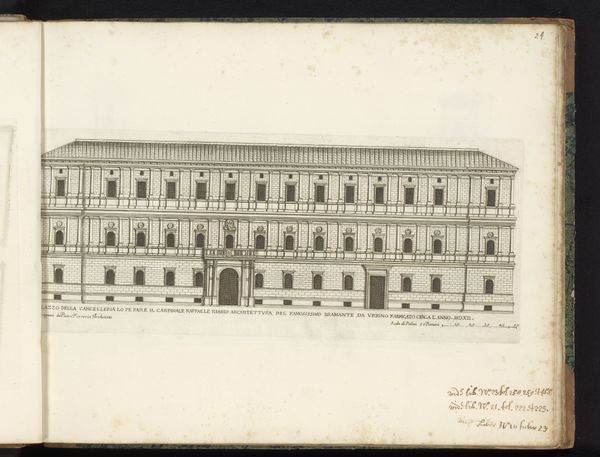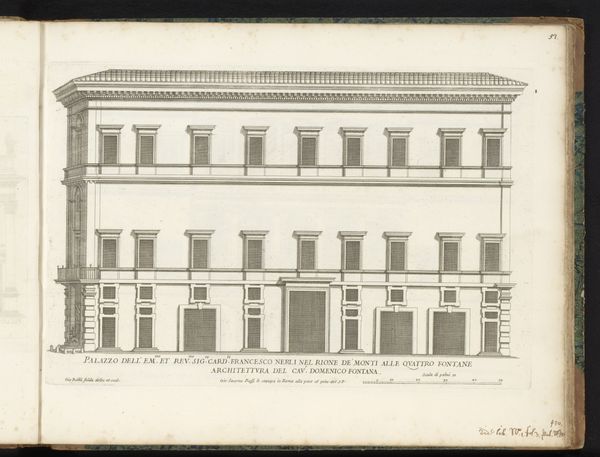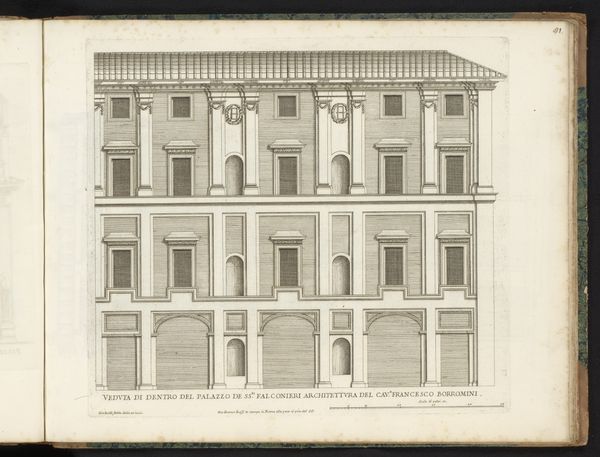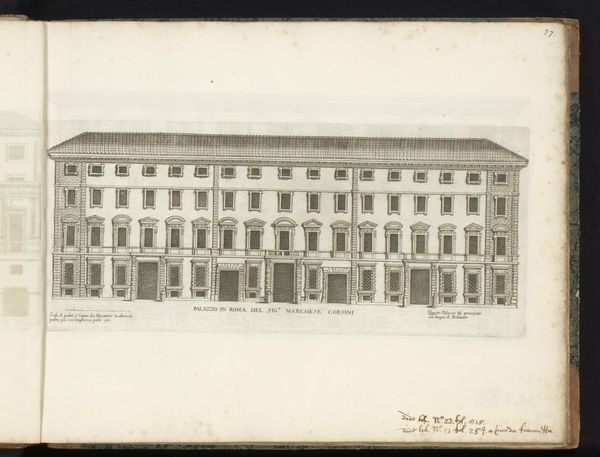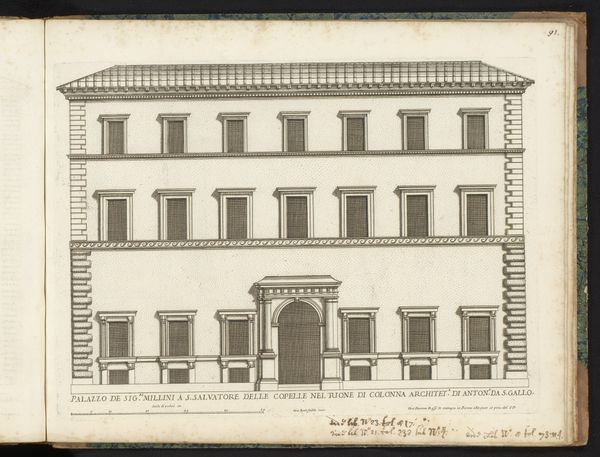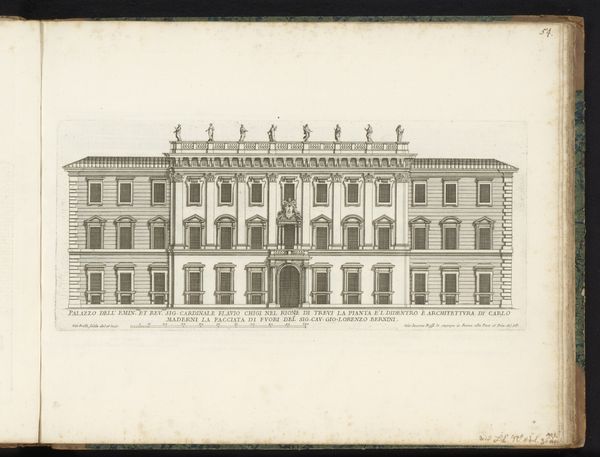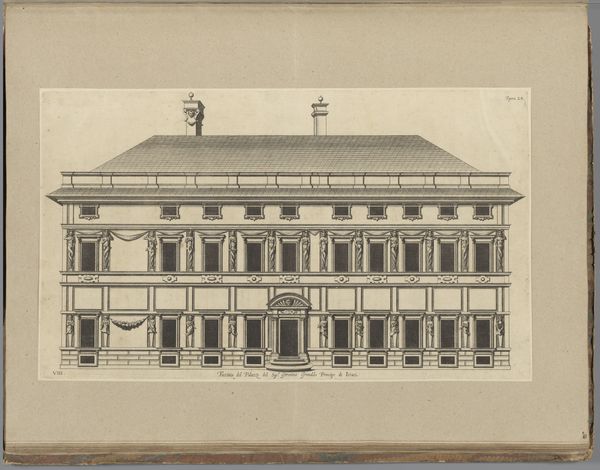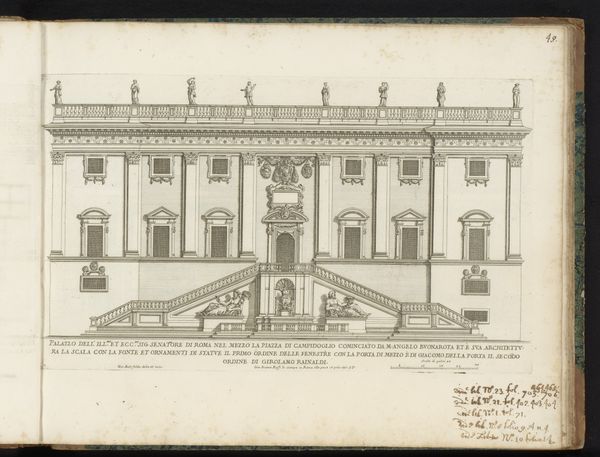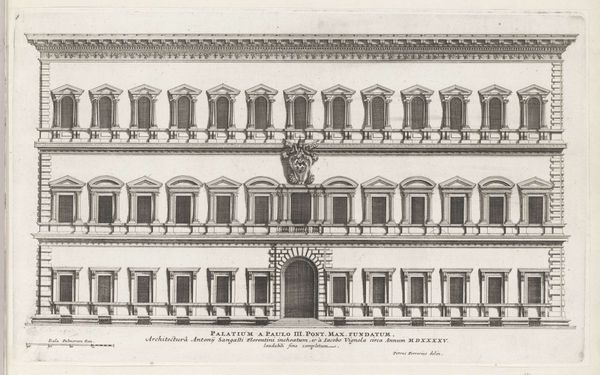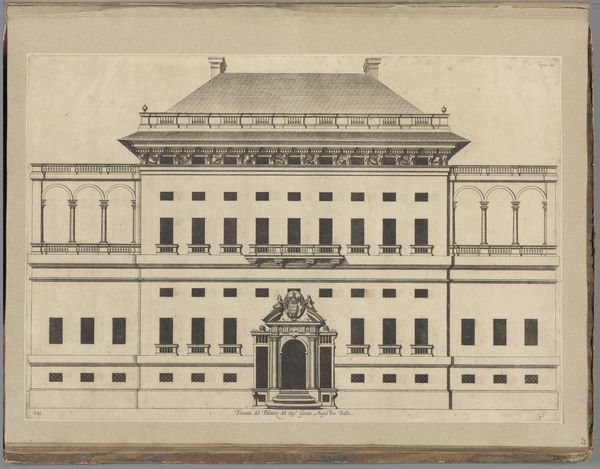
drawing, print, paper, ink, engraving, architecture
#
drawing
#
baroque
#
ink paper printed
# print
#
paper
#
form
#
ink
#
line
#
cityscape
#
engraving
#
architecture
Dimensions: height 210 mm, width 431 mm
Copyright: Rijks Museum: Open Domain
Curator: This linear engraving, "Zijgevel van Palazzo del Quirinale," offers a meticulously rendered side view of the papal palace. Created after 1655 by Giovanni Battista Falda, it's currently housed in the Rijksmuseum. Editor: It's striking how rigid the architectural depiction appears. Almost unsettlingly symmetrical, cold even. What's the intention behind such unwavering exactitude, I wonder? Curator: Considering the Baroque context, that rigidity speaks to the period’s desire for order and control, particularly when it comes to power structures embodied by the church. This wasn’t merely documentation; it was about projecting authority. The lines literally illustrate social stratification! Editor: I agree that this architectural print seems geared to display social status, yet my inclination is also to view the means of labor implied in creating the Quirinale, the extraction of stone, the movement of materials, the engraver replicating these efforts—there is plenty that the lines cannot, and do not, express. Curator: Precisely. What remains unsaid is as crucial as what is meticulously rendered. Who does this architectural certainty serve? What bodies are involved in constructing such structures and maintaining the socio-political reality the engraving represents? These absences highlight deep systemic power imbalances of the time. Editor: Falda’s rendering certainly emphasizes the exterior façade of the palace, further enforcing its monumental aspect. There are no persons represented and even trees and landscaping elements appear strictly ordered. This image functions like propaganda for Papal dominance. Curator: Indeed. By stripping away elements of human existence around it, it solidifies this image of the Church as an unwavering structure; a clear visual argument for their permanence and power, obscuring the exploited labor that underpins its very existence. The print normalizes hierarchy. Editor: Seeing Falda's work through this lens, one can better grasp both the intention behind and impact of depicting it, thereby rendering its silent politics visible through the means and materials invested in it. Curator: Yes, and understanding the Palazzo's depiction as part of a visual program, reinforces our understanding about the ideologies being manifested within the lines, in this piece, as elsewhere in 17th-century Rome.
Comments
No comments
Be the first to comment and join the conversation on the ultimate creative platform.
